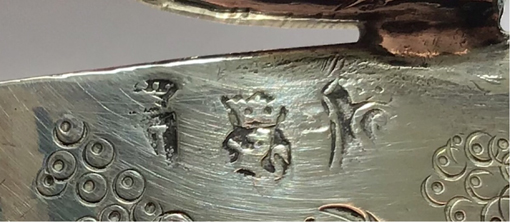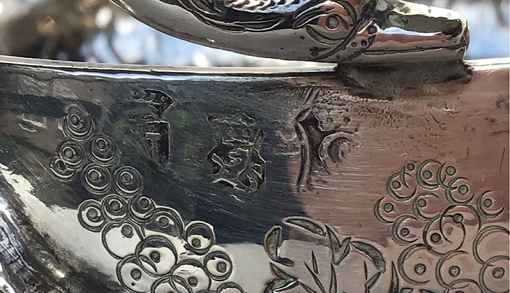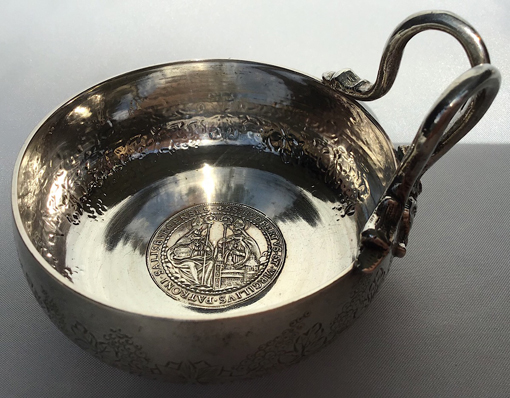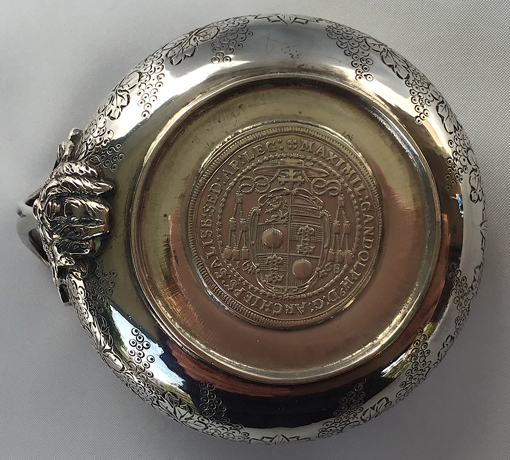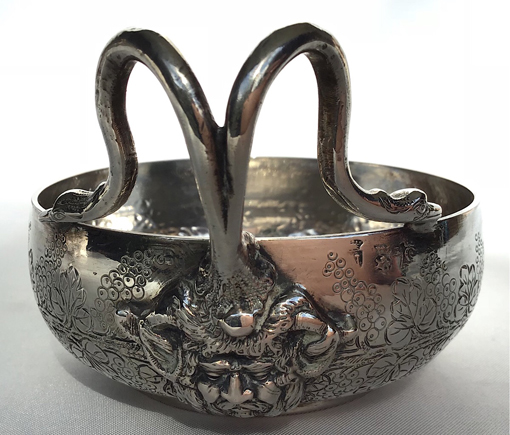I think the marks are safely attributable to Gebr.
Dingeldein of Hanau, which was founded by brothers Friedrich Otto (ca. 1838-1901) and Freidrich Wilhelm (ca. 1838-1910)
Dingeldein. Friedrich Otto's son August Ernst
Dingeldein (1874-1962) was their successor, and married Margarethe Kurz (1876-1947), the daughter of Karl Kurz (1851-1936), which is how the
Dingeldein and Kurz companies came to be merged. He did open a New York showroom assisted by his sons Karl August (1901-1965) and Otto Friedrich (1906-1991)
Dingeldein, both of whom moved to America permanently in 1927, where they became prominent silversmiths in New Orleans, Louisiana and Cape Girardeau, Missouri, respectively. (Their father joined them to reside in the US after their mother’s death.)
Karl August
Dingeldein’s son Carl A. Dengel (who shortened the family name) gave the family silversmithing tools that remained with his father to the Historic New Orleans
Collection in 2007. Among them are some sixteen so-called “18th Century French and Austrian Hallmark Punches”. New Orleans master silversmith Ellis Joubert III (who sadly died in late 2016) was given permission to strike these punches, and he graciously allowed me to photograph them.

As you can see, all three of your marks are in the
Dingeldein collection: the “crowned L” (top row center, inverted), the “crowned N” (second row left) and the “crowned rampant lion” (second row center). The latter -and the ones to its right - were evidently variations of the
Dingeldein trademark used in the 1920s as noted by Scheffler in
Goldschmiede Hessens and confirmed by the 1925
Deutscher Goldschmiede-Kaldender.

I think this may well be a unique example of actual surviving punches for Hanau pseudo-marks.
Hope this helps!
